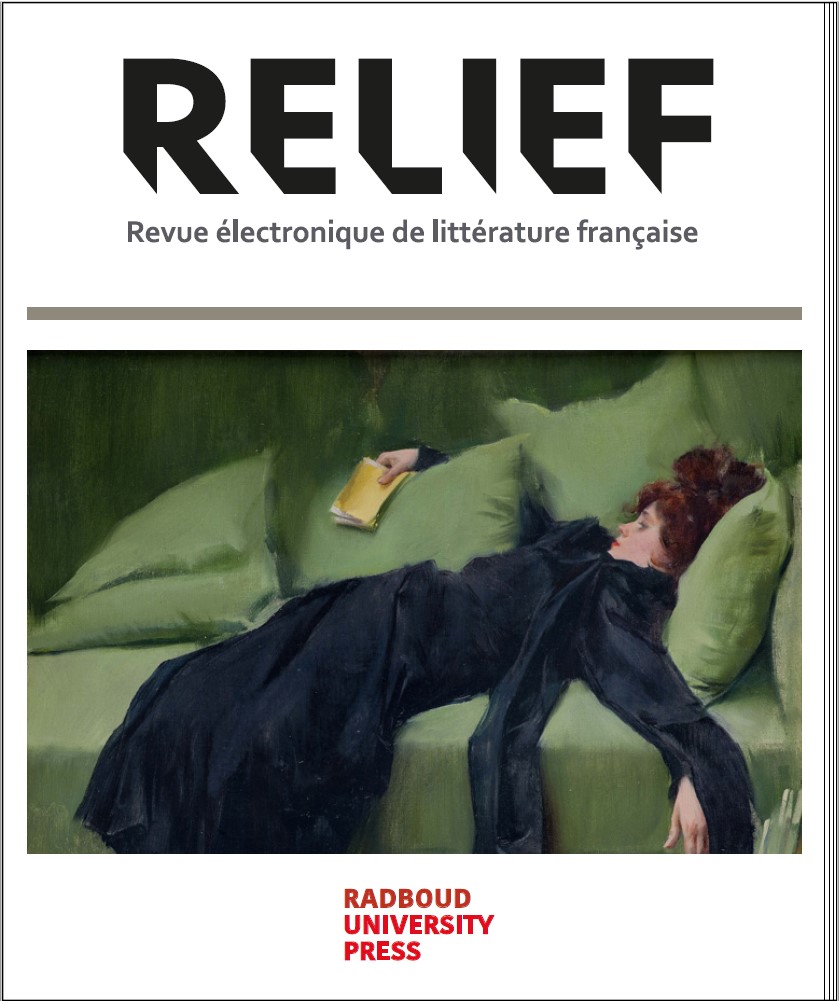'Madam', 'sir' : about the narratee’s gender in 'Dieu ne finit pas' and 'Les Onze' by Pierre Michon
DOI:
https://doi.org/10.51777/relief18426Keywords:
Pierre Michon, addressed narrative, narratee, genderAbstract
In response to the question whether the female reader is a reader like any other, this article analyses the figure of the female reader in the imagination of a male author: Pierre Michon. More specifically, it examines the place of gender in the narrative structure of "Dieu ne finit pas" and Les Onze. Both texts are "addressed narratives" in which a narrator talks with a narratee. This narrative phenomenon allows us to consider the narratee as an image of the interpreter of the text. The hypothesis of this article is therefore as follows: depending on their genre, narratees do not refer to the same representation of reading, to the same "imaginary of reading" (Estelle Mouton-Rovira). Firstly, the gender attributed to the narratee influences its textual properties. Secondly, this gender determines the posture it adopts about the narrator. Finally, the way Michon represents gender in his texts overlaps with the way he seems to fantasize his readership. In Michon's work, the female reader is a "minuscule" reader, excluded from the world of letters.

Downloads
Published
How to Cite
Issue
Section
License
Copyright (c) 2023 Baptiste Lefils

This work is licensed under a Creative Commons Attribution 4.0 International License.
All articles published in RELIEF appear in Open Access under the Creative Commons Attribution 4.0 International License (CC-BY 4.0). Under this licence, authors retain ownership of the copyright of their article, but they allow its unrestricted use, provided it is properly cited.




